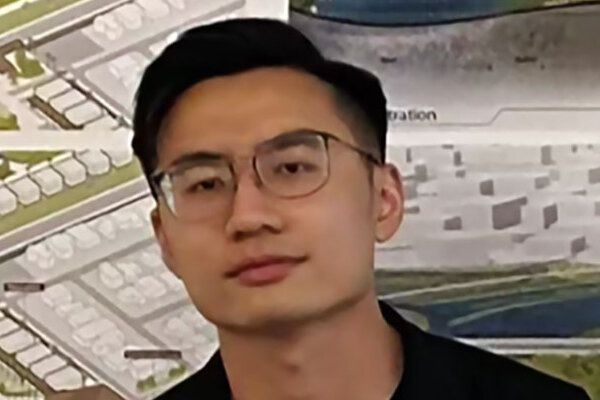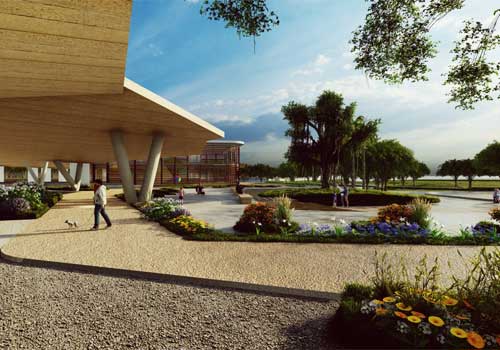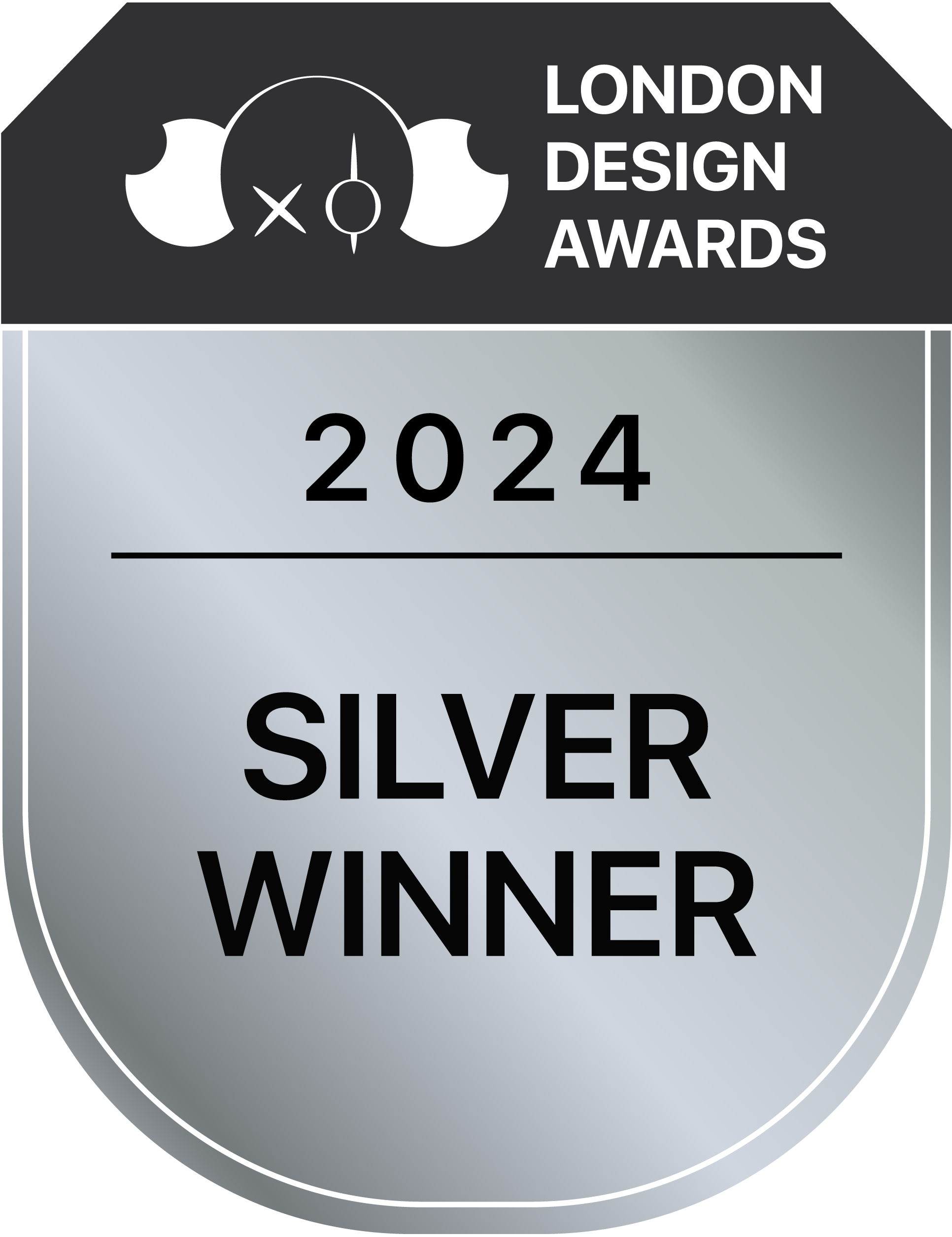
Wentao Zhong
1. Please give us a brief bio of yourself and your design background.
Hi! I'm Wentao Zhong, a landscape, urban, and visual designer. I'm currently based in Portland, Oregon. My design background consists of landscape architecture, urban design, and architecture, all of which allow me to utilise and combine them into an innovative design.
2. What made you become/why did you choose to become a designer/artist?
I love visualising and illustrating my observations and experiences. Designers have the power to rethink these experiences and turn them into designs for and with people. Pursuing a career in design would allow me to use my experiences and ideas to help others and make a positive impact in the world.
3. Tell us more about your agency/company, job profile, and what you do.
W Studio is comprised of a team of designers with diverse backgrounds, including architecture, landscape design, urban design, and UI/UX design. We collaborate to share design ideas from different perspectives and utilise our skills to communicate and create prototypes and concepts. Our work covers a wide range of scales, including architecture, gardens, furniture, and toys.
4. What does “design” mean to you?
Design involves identifying problems and needs, creating new ways to think and solve problems, and, most importantly, helping people live in a better world.
5. What’s your favourite kind of design and why?
I enjoy creating small-scale designs for outdoor and indoor furniture. By starting with low-cost prototypes, we can quickly gather feedback from people and make improvements. If the design is appealing and budget-friendly, it will have long-term appeal and be environmentally friendly.
6. To you, what makes a “good” design?
Keep thinking on different scales and get feedback. Designers must stay humble and continue learning new skills and insights from others. Listen to the voices of different people and learn from them. All of these experiences will contribute to creating good designs.
7. How did you come up with the idea for your award-winning design?
In 2017, Hurricane Maria destroyed the cities and small towns of Puerto Rico, including Toa Baja. This town stands as a testament to the remarkable resilience of its community in the face of adversity. The aftermath of these natural disasters has profoundly impacted the town's infrastructure and socio-economic fabric, underscoring the urgent need for comprehensive revitalisation efforts. Against this backdrop, our design attempts to be a beacon of hope, seeking to rebuild and fortify the town's resilience against future environmental threats.
8. What was your main source of inspiration for this design?
Highline Park and Freshkills Park, designed by Field Operations, where we learned how to use design to think at different scales and time periods to create the framework for our design.
9. Do you think your country and its cultural heritage has an impact on your design process?
Yes, I believe that my country and its cultural heritage have taught me to consider how the environment and culture influence design. Being patient and humble can greatly impact the design process.
10. Congratulations! As the winner of the London Design Awards, what does it mean to you and your company and team to receive this award distinction?
I am ecstatic about receiving this award! It holds great significance for our team and motivates us to reflect more on the world we live in and the challenges we encounter. Design can always serve as a tool for us to contemplate, listen, create, and assist others in communicating effectively and living in a better world.
11. Can you explain a bit about the winning work you entered into the London Design Awards, and why you chose to enter this project?
Strategically, our design unfolds across three pivotal stages. Firstly, topographical interventions aim to mitigate hazards by constructing a regional berm to safeguard against sea-level rise and interconnecting water bodies to facilitate inland water flow. Subsequent efforts focus on ecosystem enhancement by establishing filtration wetlands to purify water, expand coqui habitats, and promote biodiversity.
Concurrently, community revitalisation initiatives aim to repurpose public spaces, create new amenities, and develop trail networks to foster social connectivity while doubling as evacuation shelters during emergencies. These interventions converge in a comprehensive site plan envisioning our design that harmonises communities and habitats, offering newfound opportunities for coexistence and engagement.
12. What were the main challenges you faced during the design process, and how did you overcome them?
Time and project management are always challenging during the design process. My team and I typically spend a significant amount of time researching topics related to design, the environment, and science. We can create a more detailed project management plan with more information and discussions. Our guiding principle is that work done is better than perfect.
13. How do you think winning this award will impact your future as a designer?
Winning this award has been a key part of our previous project, and we aim to use this experience to connect with more people and understand their issues. Our goal is to think broadly and use our designs to communicate with a wider audience and solve various problems. We are excited and optimistic about continuing our unique design work.
14. What are your top three (3) favorite things about the design industry?
Communication- It fosters clarity, ensuring that ideas are conveyed accurately between team members, clients, and stakeholders. Good communication in design is not just about sharing information; it’s about actively listening, providing constructive feedback, and aligning everyone toward a common vision. This exchange of ideas and insights helps refine concepts, ensuring the final design resonates with its intended audience.
Innovative atmosphere - It is essential in the design process, as it nurtures a culture of experimentation and curiosity. In such an environment, boundaries are pushed, and traditional methods are challenged, leading to the discovery of novel solutions. It’s a space where new technologies and methodologies are explored, and creative risks are encouraged. This atmosphere empowers designers to think beyond the conventional and to approach problems from fresh perspectives, fostering breakthroughs that can set new standards in the industry.
Creative thinking - It is the driving force behind exceptional design. It involves approaching challenges with an open mind, generating original ideas, and synthesising diverse influences into unique solutions. Creative thinking in design is not limited to aesthetics; it encompasses problem-solving, user experience, and functionality. It requires a balance of intuition and analytical skills, allowing designers to craft experiences that are not only visually compelling but also meaningful and effective in their purpose. By embracing creative thinking, designers can transform ordinary concepts into extraordinary innovations that resonate deeply with their audience.
15. What sets your design apart from others in the same category?
Our team includes designers with different design backgrounds, which allows us to bring diverse skills to the table when tackling design challenges. This variety enables us to generate multiple ideas and solutions for our design projects, leading to more detailed and thoughtful designs.
16. Where do you see the evolution of design industry going over the next 5-10 years?
AI-generated tools will be the most important topic for the next 5 to 10 years. Instead of worrying about losing our jobs, I believe focusing on human connections and quality of life is more important. We should learn to communicate with AI together with humans and use AI as a tool to save time and focus on design, communication, and improving our daily lives.
17. What advice do you have for aspiring designers who want to create award-winning designs?
Sometimes, designers strive for perfection, but it's not always possible to achieve it. When faced with a design challenge, being proactive, communicating effectively, and being open to learning can often lead to creating award-winning designs.
18. What resources would you recommend to someone who wants to improve their skills in the design industry?
"The Design of Everyday Things" by Don Norman emphasises the importance of user-centred design, advocating for intuitive, functional, and error-preventing products by focusing on key principles like affordances, signifiers, feedback, and constraints.
19. Tell us something you have never told anyone else.
I spend the first ten minutes of every day writing down random thoughts. It's my way of relaxing.
20. Who has inspired you in your life and why?
Oki Sato is celebrated for his minimalist yet playful approach to design, often blending simplicity with a touch of whimsy. His work spans a wide range of disciplines, including architecture, interior design, furniture, and product design. I learned a lot from how he thinks about design and always strives to be creative, using various design approaches to solve problems.
21. What is your key to success? Any parting words of wisdom?
Never fear failure. In design, we always encounter new challenges. Learning and thinking from various perspectives and turning them into design will always help. Keep trying, and don't give up.
22. Do you have anything else you would like to add to the interview?
Thanks for the award and all the help from my team.

